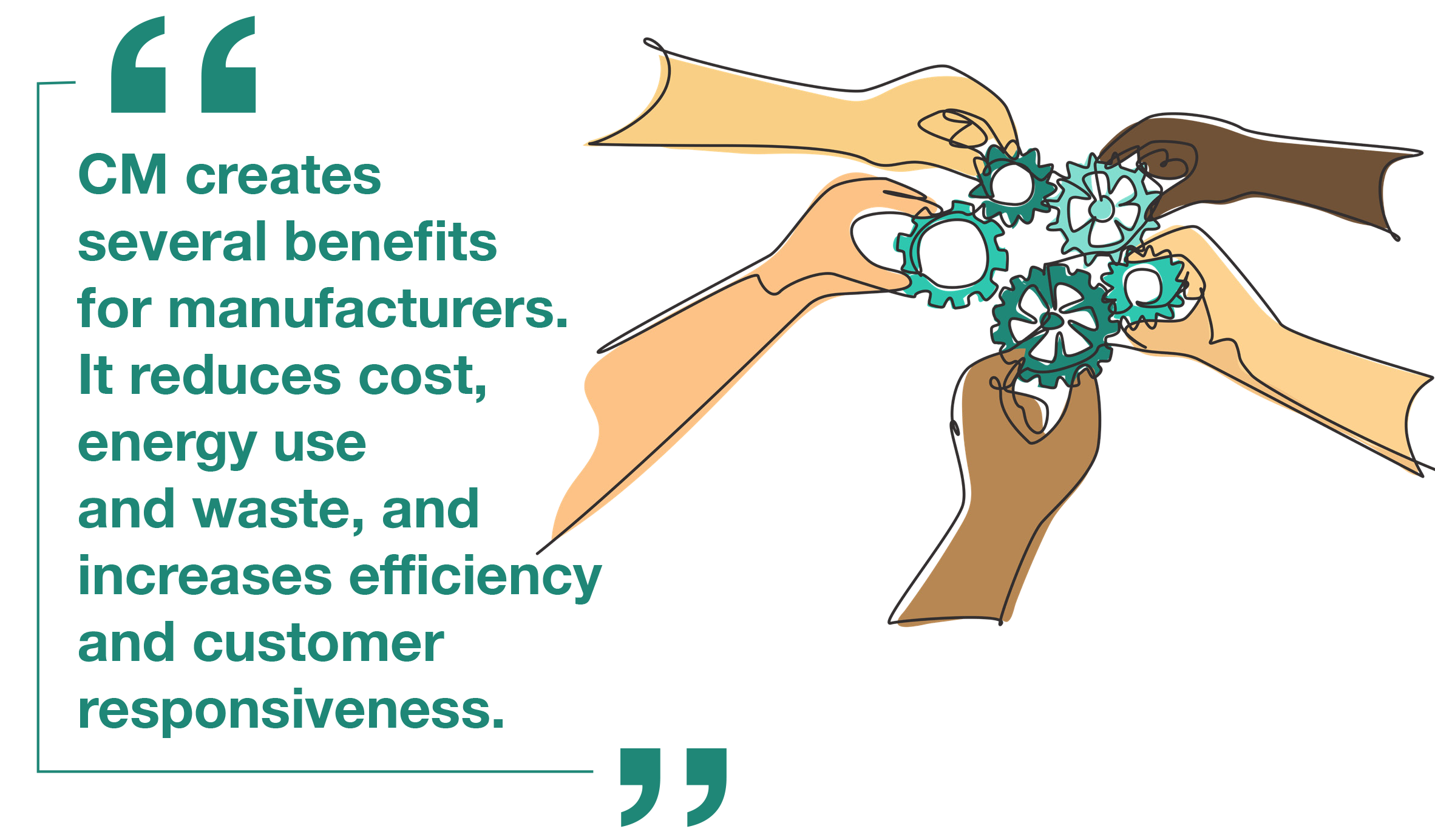COLLABORATIVE MANUFACTURING

Collaborative manufacturing (CM) is an approach in which manufacturers work together with their business partners to create value for their business. The idea is that manufacturers, collaborating with customers and suppliers but also with machine builders, product designers, software developers, and integrators, all co-design and co-create their products and business and manufacturing processes. CM creates several benefits for manufacturers. It reduces cost, energy use and waste and increases efficiency and customer responsiveness. Working with new partners, also with other companies in the same supply chain level in industry clusters, CM can provide access to new markets. In addition to increased communication, collaborative effort and knowledge exchange improve the competitiveness of the manufacturers.
CM and supply chains
CM is also crucial for global supply chains as it increases responsiveness and agility. This is achieved by increased supply chain visibility by using data from suppliers and customers. From a broader perspective, collaborating with other companies increases diversification and alternatives in the supply chain and enhances flexibility, one of the biggest current challenges of global supply chains. In that way, this increases competitiveness as well as the resilience and sustainability of our supply chains(1).

Examples of CM are plentiful such as industrial clusters, supply chain integration and collaboration, joint projects initiatives and consortiums. Next to these, other related collaborative initiatives such as cloud computing, blockchain, open AI, decentralized supply chain control towers, and collaborative robots can be considered as examples of CM.
CM for SME manufacturers
Such an approach is crucial for especially SME manufacturers. SME manufacturers although have limited resources and they are under high competitive market and heavily depend on their customers and suppliers, they absorb most of the supply chain uncertainty. Unlike large business enterprises that can influence their supply chain, they have very little influence. Therefore, for SMEs, CM can be quite functional. They can also create further value if they collaborate with their competitors.
An example of a CM is the recent AMP project called COLMAN, an acronym for collaborative manufacturing. In this project, Fraunhofer Innovation Platform, the University of Twente and Global Electronics, an SME manufacturer providing PCB solutions to its customers work together to develop a proof-of-concept demonstrator tool that a typical SME can work together with its suppliers and customers. The tool uses supply chain information from different suppliers and provides a platform to define and communicate alternative solutions in the supply chain with its customers. The demonstrator, when it is developed, will identify, select, negotiate and offer alternative components/materials designs to their customers preferably at an early stage of the customer order process. The demonstrator will be developed together with partners and tested using real cases. The tool is different from search tools in the market finding alternative suppliers as it also provides a platform to communicate alternatives with the customer but with people from different disciplines and with different interests such as designers, supply chain planners and engineers. After the proof-of-concept tool is tested, depending on the interests of partners, the tool can be extended to a larger sale where supply chain partners at the same level can collaborate in an industrial cluster setting. The ultimate goal of the tool is to reduce lead times, and costs of products, and increase customer responsiveness and satisfaction.

The future of CM
CM has tremendous potential. However, despite its benefits, CM is still a new concept and it has several challenges. It requires secure and trustable technology and infrastructure to enable collaboration. It also requires the development of trust between partners. Although it improves competition, these collaborative efforts can be hindered as this can be viewed as a risk of sharing competitive advantages with competitors. As in every business collaboration, it needs new business models to share benefits as well as regulations that define the rules of the collaboration. Furthermore, CM is a big change for many companies and it requires new skills and organizational culture. These are future challenges that are waiting for industry and academia.
Sources
1. https://www.energy.gov/eere/buildings/abc-collaborative